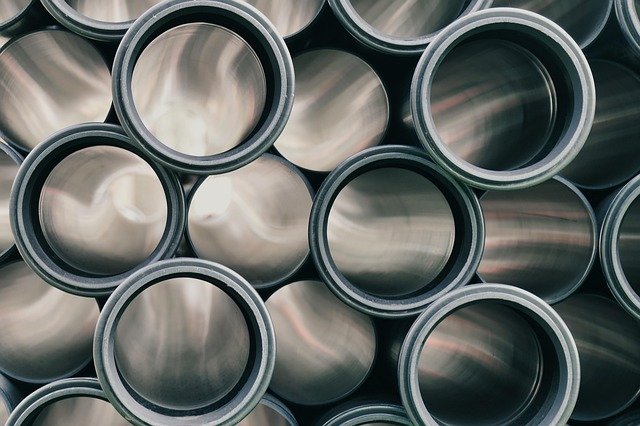Acoustic and Thermal Approaches for Identifying Subsurface Pipe Breaches
Subsurface pipe breaches can cause significant water loss, infrastructure damage, and service disruptions. Acoustic and thermal techniques offer complementary ways to detect leaks by sensing sound, temperature differences, and changes in pressure patterns. Understanding how sensors, telemetry, mapping, and analytics work together helps utilities and maintenance teams prioritize inspection and conservation efforts.

Subsurface pipe breaches are often hidden until visible symptoms appear at the surface or in system performance records. Early detection relies on tools that translate physical signals—sound, heat, and pressure—into actionable information. Acoustic and thermal methods each target different leakage signatures: acoustic approaches pick up vibrations and noises transmitted along pipes and surrounding soil, while thermal imaging detects temperature anomalies caused by escaping water. When combined with sensors, telemetry, and analytics, these approaches support targeted inspection, diagnostics, and ongoing monitoring to reduce water loss and limit repair scope.
How do acoustic sensors detect water and pipe leaks?
Acoustic leak detection uses sensitive sensors placed on pipes, hydrants, or excavated access points to capture the faint noises produced by water escaping a pressurized system. These sensors measure vibration and sound frequency patterns that differ from normal flow noise. Networked acoustic monitoring can log continuous signals, and analytics software isolates leak-like signatures by filtering background noise from traffic or operational activities. For older metallic pipes, sound transmission can be strong, while plastic or deeply buried pipes may require higher-sensitivity sensors or closer access for reliable detection.
Acoustic methods are well-suited for pinpointing bursts on pressurized mains and for routine inspection of sections where pressure changes suggest anomalies. Integration with mapping and telemetry helps correlate acoustic events with pipe location data and historical inspection records.
What role does thermal imaging and mapping play in inspection?
Thermal approaches detect temperature differences created when water at a different temperature than the surrounding soil escapes a pipe. Infrared cameras and thermal sensors mounted on drones, vehicles, or handheld devices can produce thermal maps that highlight anomalous areas. For example, leaking warm water into cooler ground—or vice versa—creates contrast visible in thermal imagery, which can be overlaid on utility maps to guide excavation or focused inspection.
Thermal mapping is particularly useful for shallow utilities and for identifying leaks that have reached the surface or created wet zones. Environmental conditions—solar loading, wind, and recent rainfall—affect thermal signatures, so scheduling inspections during optimal times improves reliability.
How are pressure, telemetry, and diagnostics integrated?
Pressure monitoring and telemetry provide continuous system-level visibility that complements point-based acoustic or thermal surveys. Pressure sensors installed at strategic locations detect transient drops or sustained deviations that may indicate a leak or pipe breach. Telemetry systems transmit this data in near real time to central analytics platforms, enabling trend analysis and automated diagnostics that flag suspicious events for follow-up.
Combining pressure telemetry with acoustic alerts can reduce false positives: a pressure anomaly aligned with an acoustic detection increases confidence in a true leak. Diagnostics can also prioritize areas for manual inspection, saving time and focusing maintenance resources where they are most needed.
How do analytics, mapping, and monitoring improve maintenance decisions?
Modern leak detection programs fuse data from multiple sources—acoustic sensors, thermal images, pressure telemetry, historical pipe condition records, and GIS mapping—into analytics dashboards. Machine learning and pattern-recognition models can help distinguish genuine leaks from benign signals and rank incidents by probable severity and urgency. Mapping these insights onto utility asset layers supports efficient scheduling of inspection crews, targeted excavation, and replacement planning, reducing unnecessary disruption and optimizing maintenance budgets.
Routine monitoring also supports conservation goals by quantifying water losses over time and demonstrating the impact of repairs. Metrics derived from analytics inform long-term asset management and capital investment decisions without relying solely on visual inspection.
What inspection and conservation practices support detection efforts?
A comprehensive approach combines periodic acoustic surveys, opportunistic thermal scans (for example, during low-traffic hours or using aerial drones), and continuous pressure monitoring at key nodes. Regular inspection intervals, prioritized by analytics-derived risk scores, help utilities catch smaller leaks before they escalate. Documentation of inspection results, repair outcomes, and post-repair validation further refines detection models and improves future diagnostics.
Conservation benefits when detection reduces non-revenue water and prevents collateral damage to streets, buildings, and the environment. Clear protocols for how and when to deploy sensors, how to interpret telemetry, and how to validate suspected breaches support consistent, defensible maintenance practice.
Conclusion Acoustic and thermal approaches offer distinct but complementary pathways for identifying subsurface pipe breaches. Acoustic sensors excel at capturing leak-generated noise in pressurized systems, while thermal imaging and mapping reveal temperature anomalies associated with escaping water. When paired with pressure telemetry, GIS mapping, and analytics-driven monitoring, these techniques enhance diagnostics and enable focused maintenance that supports conservation and reliable utility service.





